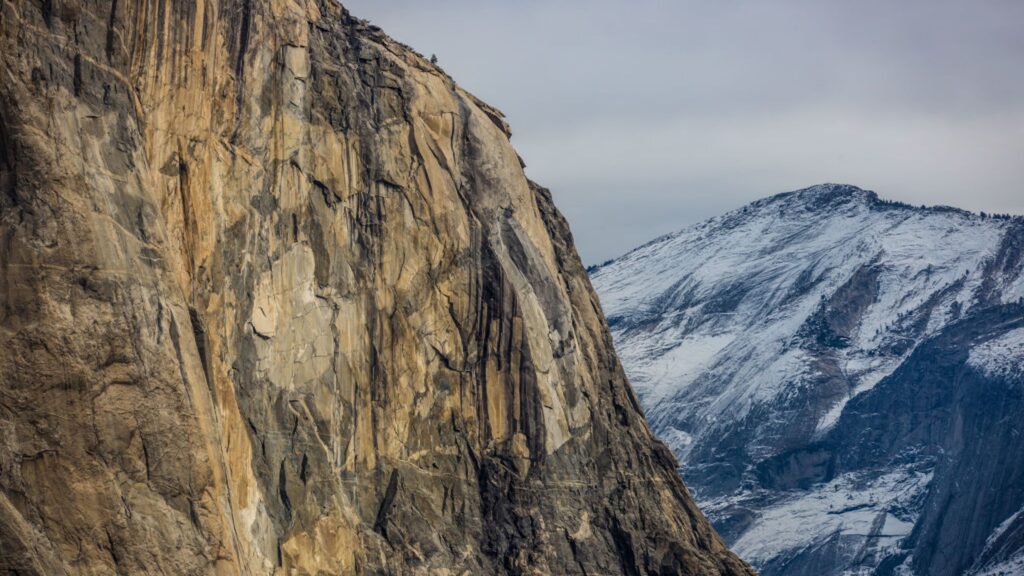Although BASE jumping is not allowed in national parks, sources tell Outside the activity is not all that uncommon.
The face of El Capitan and Clouds Rest seen from Tunnel View in Yosemite National Park (Photo: George Rose/Getty Images)
Published October 10, 2025 03:34PM
With Yosemite National Park still open during the federal government shutdown, BASE jumpers are allegedly making illegal jumps from the park’s giant rock formations. The National Park Service (NPS) told Outside it is looking into the incidents, but an anonymous source said BASE jumping in Yosemite Valley is nothing out of the ordinary.
Videos posted to Instagram by a local climber, Charles Winstead show what appears to be several BASE jumpers parachuting down from Yosemite’s famous granite monolith, El Capitan.
“Must be taking advantage of the government shutdown to get away with it,” Winstead wrote in the caption of one video. “Definitely feeling some freedom to flout the rules due to the shutdown,” he said in another.
And while BASE jumping is not allowed, the activity is not all that uncommon.
“BASE jumping is illegal in all national parks, including Yosemite,” a spokesperson for the park service’s Office of Public Affairs told Outside, citing “the significant safety risks it poses to participants, the public, and first responders.” They added that the NPS is “aware of reports of BASE jumping in Yosemite and investigates all reports.”
Unlike skydiving, where parachutists jump out of a plane at high altitude, BASE jumping is the practice of parachuting from fixed objects, both artificial structures and natural formations, at much lower altitudes. This creates a far slimmer margin for error. BASE jumpers do not carry a reserve chute, as free-fall time is extremely short and there is no time to cut a failed main chute away and deploy a reserve. The word BASE is an acronym for the four types of objects a jumper may leap from: a building, an antenna, a span (bridge), or the earth (natural formation).
The U.S. Department of the Interior said in a 2024 memo that “BASE jumping may be allowed by permit, but only after it is determined to be an appropriate activity through a park planning process.” This planning process must consider “potential impacts, both positive and negative, to park values, resources, and visitors” as a result of any BASE jumps.
A former member of Yosemite National Park’s search and rescue team (YOSAR), speaking to Outside from inside the park on condition of anonymity, said that Winstead’s posts—and subsequent news coverage—were misleading. Although BASE jumping has been illegal without a permit in Yosemite since the 1980s, the rule is routinely flouted.
“During peak season, late spring and early fall, people are BASE jumping in the park every week. The crowd that comes here and jumps on a frequent basis is super stealthy. Their habits aren’t changing. They’re gonna do it no matter what,” the YOSAR staffer said. “The park’s Visitor and Resource Protection division, which includes law enforcement and emergency services, are all still employed. So, the people who would enforce this rule, and also respond to it, are still here and working.”
They added that the government shutdown has crippled some park services, including fee collection, interpretive ranger-led educational talks, and scientific research. However, Yosemite’s law enforcement and emergency services are considered essential services and are still largely operating as usual.
The YOSAR staffer added that, in their experience, BASE jumping-related accidents and rescues are rare. “In the past four years, there have been no BASE jump rescues. The bigger issue is people going hiking with one plastic water bottle,” they said.
Statistics are hard to find. According to a story published last year in The Washington Post, the NPS was unable to provide a list of BASE fatalities in the park. But an unofficial online fatality list hosted on the site BASEaddict records just 527 total BASE jumping deaths around the world in the past 44 years. Roughly half that many die on NPS-managed lands in a single year.
When BASE accidents do occur, however, they tend to make headlines. Famed climber Dean Potter died while jumping with a wingsuit in Yosemite Valley in 2015, and BASE pioneer Jan Davis died jumping in the park in 1999. Individuals have been killed jumping in other parks, too. A 43-year-old, Jason Guthrie, perished while jumping in the Grand Canyon last year.


